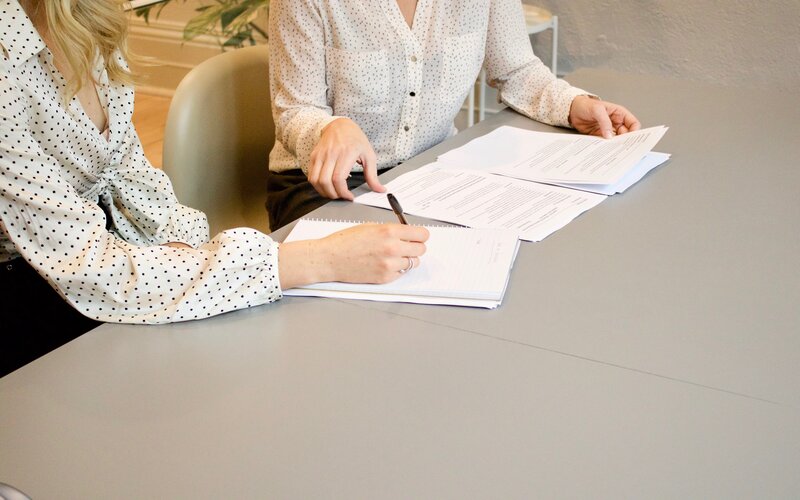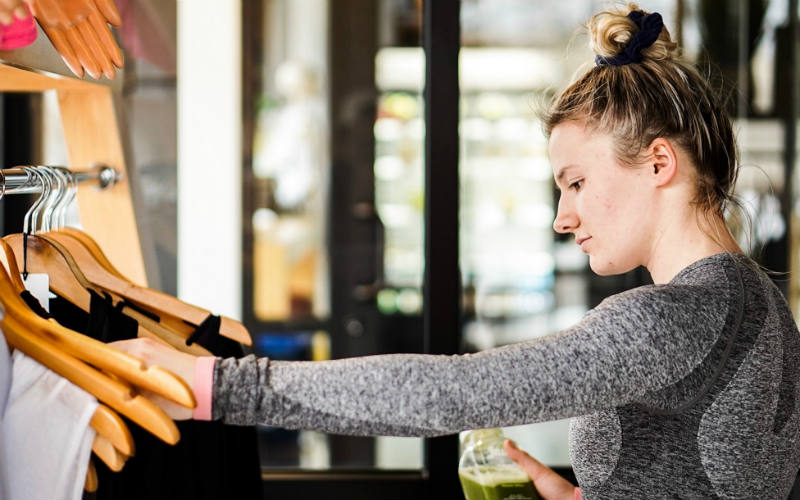Cost-of-living is clearly a major theme of the 2022-23 Federal Budget, which is no surprise given polling suggests it is the top concern of voters ahead of the upcoming federal election.
This concern goes hand-in-hand with the threat of rising inflation, largely driven by widespread supply chain issues and global fuel supply disruptions.
Treasurer Josh Frydenberg said as much in his Budget Speech:
“Events abroad are pushing up the cost of living at home. Higher fuel, food and shipping costs are increasing inflation and stretching household budgets,” Mr Frydenberg said.
“Tonight the Morrison Government announces a new temporary, targeted and responsible cost of living package to ease these pressures. Practical measures that will make a difference.”
Time will tell whether these measures will make a difference – indeed, whether some of these measures will come into place at all should the Coalition lose the election.
Ultimately, it is a challenging environment in which to release a budget – politically and economically.
Try to curb inflation by cutting spending and risk certain loss in the election? Or entice voters with big cash splashes that risk driving prices up even further?
On the surface, this budget appears to tackle both, with some extra support payments to entice voters, and a cut to the fuel excise to curb inflation.
Detailed below are some of the biggest 2022-23 Federal Budget takeaways for everyday Aussie savers.
Low to middle income tax offset (LMITO) boosted from $1,080 to $1,500 (extra $420), but not extended for another year
The low to middle income tax offset (LMITO) – affectionately known as the ‘lamington’ – has been given a $420 “cost of living” boost in what is set to be its final year of existence.
The existing tax offset of up to $1,080 for those earning up to $126,000 per year (with the maximum benefit going to those earning between $48,000 and $90,000) will now offer up to $1,500 in individual savings for the 2021-22 tax returns.
All LMITO recipients will benefit from the full $420 increase, aside from those that do not require the full offset to reduce their tax liability to zero.
However it appears to be the last blast of the ‘lamington’ given the Treasurer did not mention an extension of the offset to 2022-23, unlike in last year’s budget speech.
“Tonight I also announce a new one-off $420 cost of living tax offset for more than 10 million low-and-middle income earners,” Mr Frydenberg said.
“Individuals already receiving the low and middle income tax offset will now receive up to $1,500 and couples up to $3,000 from 1 July this year. This measure comes on top of the $40 billion in tax relief already provided by our Government since the start of the pandemic.”
Given the upcoming election, some may be surprised by the absence of a LMITO extension for another year.
The LMITO was first introduced in April 2019 as a temporary bonus serving as an enticement to re-elect the sitting government.
With it remaining in place for every financial year since then, an end to it in 2022-23 will feel like a significant tax hike for the many who’ve likely grown accustomed to receiving a four-figure tax refund every year.
Ahead of the budget, Director of Tax Communications at H&R Block Mark Chapman said there was no realistic chance the Government would not extend the LMITO.
"To abolish it before an election would quite simply be electoral suicide, especially if no action is taken against the next stage of the government’s already legislated tax cuts set to take effect in 2024-25," Mr Chapman said at the time.
However in its budget monitor published before the budget, Deloitte said cementing the LMITO into the tax system would have been a mistake and extending it would not have helped fairness.
“A key aim of the three stage tax cuts was to simplify the tax system. But if we extend the Lamington again, then we’ll have worsened complexity,” Deloitte reported.
“There’s a world of difference between low-to-middle income taxpayers and low-to-middle income earners. Almost half of adult Australians don’t pay personal tax, and so Lamington dollars flow disproportionally to higher income households.”
Fuel excise halved for 6 months
On the back of soaring petrol prices amid Russia’s invasion of Ukraine, the Government will halve the fuel excise for six months from 44.2 cents per litre to 22.1.
While designed to help relieve the impact of higher fuel prices on household budgets, the RBA estimates the cut could also reduce Australia’s inflation rate by 0.25 percentage points.
When filling up the standard 50-litre tank car, it amounts to an $11.05 saving.
The cut will kick in from midnight on Wednesday, but it is expected to take up to two weeks to flow through to the bowser given it depends on when the fuel retailers fill their tanks.
“For the next 6 months, Australians will save 22 cents a litre every time they fill up their car,” Mr Frydenberg said.
“A family with two cars who fill up once a week could save around $30 a week or around $700 over the next 6 months.
“The competition watchdog will monitor retailers to make sure these savings are passed on in full.”
A $250 cost of living support payment
A one-off, tax exempt payment of $250 will be paid to an estimated six million Australians in April 2022 at a cost of $1.5 billion. More than half of those set to receive this payment will be pensioners.
Those eligible for it include pensioners, welfare recipients, veterans and concession card holders.
“Together, with existing indexation arrangements, this will see a single pensioner receive more than $500 in additional support over the next 6 months, just when they need it most,” Mr Frydenberg said.
Expanded Home Guarantee Scheme
As announced on Monday, the Home Guarantee Scheme has been extended to 50,000 spots per year for three years from 2022-23, including through the introduction of the new Regional Home Guarantee.
Breakdown of the 50,000 Home Guarantee Scheme spots:
- First Home Guarantee (restricted to first home buyers): Increased from 10,000 to 35,000
- Family Home Guarantee (restricted to single parents): Increased from 2,000 to 5,000
- *New* Regional Home Guarantee (restricted to those buying new homes in regional areas): 10,000 spots
The newly-introduced Regional Home Guarantee will be available to citizens and permanent residents that haven’t owned a home for five years and wish to purchase or build a new home in a regional location.
Like the First Home Guarantee, it will allow regional home buyers to secure home loans with as little as a 5% deposit without having to pay lenders mortgage insurance (LMI), which can cost tens of thousands of dollars.
The Family Home Guarantee will still allow single parents to secure a home loan with as little as a 2% deposit.
Usually borrowers have to save up a 20% deposit to avoid paying LMI, so the schemes can help people purchase a home sooner.
From 2025-26, the government plans to reduce the total number of home guarantees to 35,000 per year on an ongoing basis.
“HomeBuilder, the First Home Super Saver Scheme and the Home Guarantee Scheme have helped make the dream of home ownership a reality. Over the last year, 160,000 Australians purchased their first home,” Mr Frydenberg said.
“Tonight we go further, more than doubling the Home Guarantee Scheme to 50,000 places per year.”
Better access to meds
In a move said to benefit 2.4 million Australians, the government will reduce the safety net thresholds for the Pharmaceutical Benefits Scheme (PBS) on 1 July 2022.
This will mean concessional patients reach the safety net with around 12 fewer scripts per year and two fewer for general patients.
“To provide further cost of living relief, tonight I also announce greater access to cheaper medicines for 2.4 million Australians,” Mr Frydenberg said.
“For many Australians, incurring these costs is non-negotiable. Australians will need fewer scripts before they are eligible for free or further discounted medicines.”
The Treasurer also detailed the new PBS listing of Trodelvy – a drug for a rare form of breast cancer - said to save patients up to $80,000 per treatment.
“For the first time, this drug gives hope to many young women, extending their life expectancy and providing an opportunity to spend precious time with their loved ones,” Mr Frydenberg said.
“Like Alison, a young mum who when she got her terminal prognosis wrote a letter to her daughter Matilda to open on her 12th birthday, when Alison would no longer be there. Because of Trodelvy, Alison will tomorrow celebrate Matilda’s 12th birthday.”
More flexible parental support
The Paid Parental Leave scheme has been altered to integrate Dad and Partner Pay and Parental Leave Pay to provide families with access to up to 20 weeks leave to use in ways that suit their specific circumstances.
Single parents will have access to an extra 2 weeks Paid Parental Leave – giving them access to the full 20 weeks.
Meanwhile, dads and partners will be able to access the scheme while also utilising any employer-funded leave – in the same way as mothers already can.
“Families, not government, are best placed to decide what works for them. We will expand eligibility and provide working families with full flexibility and greater choice. More families will be able to access 20 weeks of leave and decide how they will share it,” Mr Frydenberg said.
$120 tax deductions for small business
Small business owners are set to receive a $120 tax deduction for every $100 spent on training employees.
Similarly, every $100 spent by a small business on digital technologies like cloud computing, eInvoicing, cyber security and web design will be eligible for a $120 tax deduction.
“This Government has backed small businesses with the lowest tax rates in 50 years and record investment incentives. Tonight, we go further, rewarding small businesses that invest in skills and new technology. No one knows better than a small business owner what skills they need in their employees,” Mr Frydenberg said.
Support for apprentices
New apprentices will receive $5,000 in training support payments ($1,250 every 6 months for 2 years) to help them with the cost of living while learning.
Up to $15,000 in wage subsidies will be provided to employers that hire these apprentices.
“During this pandemic, we have already invested $13 billion in skills and training. With a record 220,000 Australians now in a trade apprenticeship. The highest level since records began in 1963. Tonight, we go further, with a new $2.8 billion investment to increase take up and completion rates,” Mr Frydenberg said.
Image via Josh Frydenberg on Twitter



 Denise Raward
Denise Raward
 Harry O'Sullivan
Harry O'Sullivan

 Rachel Horan
Rachel Horan
 Alex Brewster
Alex Brewster

